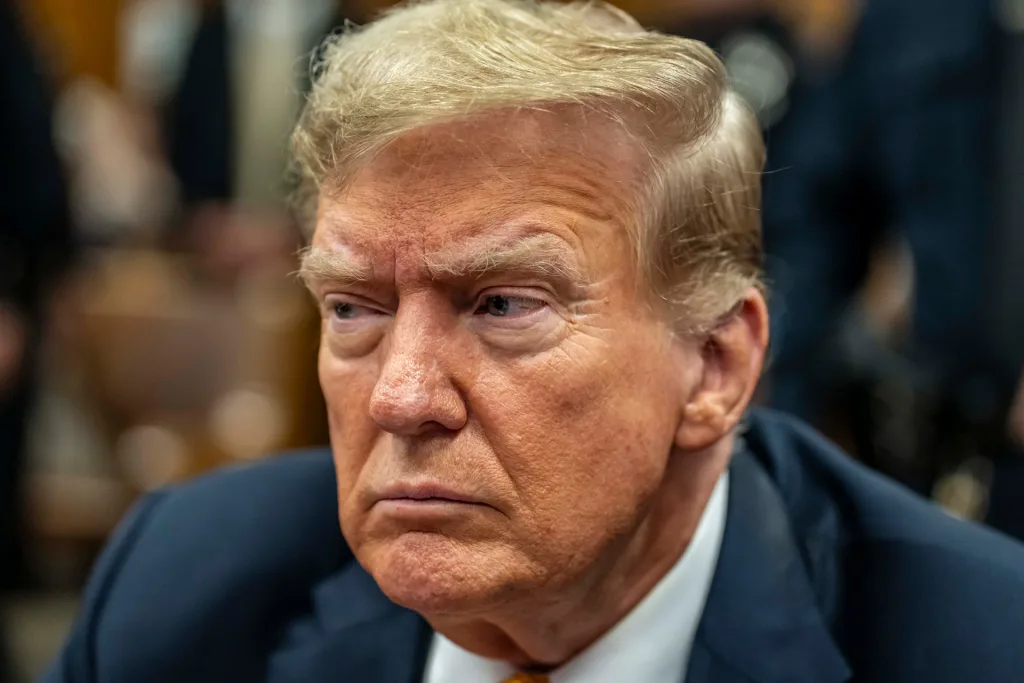In a recent event held by the National Association of Black Journalists, former President Donald Trump was directly confronted about his long history of making racially insensitive remarks. The confrontation, which has since gone viral, stands out as one of the most uncomfortable and revealing moments of Trump’s public appearances, particularly in front of a group that he had previously alienated with his words and actions. Despite his attempts to deflect and deny, Trump found himself unable to escape the accusations and was visibly shaken on stage.

At the beginning of the event, one seasoned journalist wasted no time addressing the issue head-on, recounting several instances where Trump had made false claims or offensive remarks targeting people of color. The journalist reminded Trump of his false “birther” allegations against former President Barack Obama and Nikki Haley, his derogatory comments toward Black district attorneys, and his dinner with a known white supremacist. The pointed question that followed—why Black voters should trust Trump despite this history—set the tone for the entire confrontation.
Rather than responding with introspection or an apology, Trump chose to lash out. His response, a blend of deflection and attack, typified his well-known strategy of going on the offensive when cornered. Trump criticized the journalist’s tone, calling the question unfair and launching into a tirade against the media, specifically targeting ABC News. He then attempted to pivot, claiming he had done “so much” for the Black community, yet offered little in the way of substance to back up this statement.
What made the moment even more revealing was Trump’s inability to grasp—or refusal to acknowledge—his own responsibility for the sentiments he had cultivated. Instead of owning up to his rhetoric, Trump chose to attack the messenger, further alienating himself from the very audience he was trying to win over. His frustration became more visible as the event progressed, particularly when the topic shifted to Vice President Kamala Harris.
When asked about the dismissive and often racially charged remarks made by some of his Republican allies concerning Vice President Harris, Trump’s response was both baffling and offensive. He bizarrely claimed that he didn’t know Harris was Black until recently, implying that she had “turned” Black to advance politically. This remark highlighted Trump’s persistent inability to comprehend or acknowledge multiracial identities. Harris, who is of both Black and Indian heritage, has always proudly identified with both sides of her family. Yet Trump seemed unwilling to accept this fact, reducing her identity to a political maneuver.
This exchange further underscored Trump’s misunderstanding of race and diversity in America. When pressed on whether he believed Harris was selected for her position purely because of her race—a common line of attack from his supporters—Trump deflected again, asking the journalist to define “diversity, equity, and inclusion.” This evasive tactic only served to reinforce the impression that Trump either didn’t understand or didn’t care about the significance of these concepts, which are essential to addressing systemic racism in American institutions.
Throughout the event, Trump’s discomfort was palpable. He seemed unprepared for the direct confrontation, visibly agitated by the tough questions. His inability to offer coherent responses only deepened the divide between him and the journalists in the room, as well as the wider Black community he was attempting to court.
In many ways, this event encapsulated Trump’s long-standing struggle with race relations. His refusal to engage honestly with the critiques of his past remarks and actions mirrored his broader strategy of deflecting responsibility whenever confronted. By doubling down on his attacks and dismissing legitimate concerns as media bias, Trump only reinforced the perception that he is unwilling to acknowledge the harm his words have caused.
This confrontation will likely have lasting consequences as Trump continues to seek support from African American voters. His inability to offer a sincere or thoughtful response to questions about race may further alienate a demographic that has historically been skeptical of his leadership. In a country that is growing increasingly diverse, the need for political figures who can engage with these complexities thoughtfully is more important than ever. Unfortunately for Trump, this event highlighted that he is still far from being that kind of leader.
As Trump moves forward in his political career, this moment stands as a reminder of his deep-seated challenges in building relationships with communities of color. Confronted by seasoned Black journalists, he was unable to navigate the conversation, choosing instead to retreat into his familiar patterns of deflection, attack, and avoidance. For many, this will be yet another example of Trump’s failure to reckon with his own role in stoking racial division in the United States.




